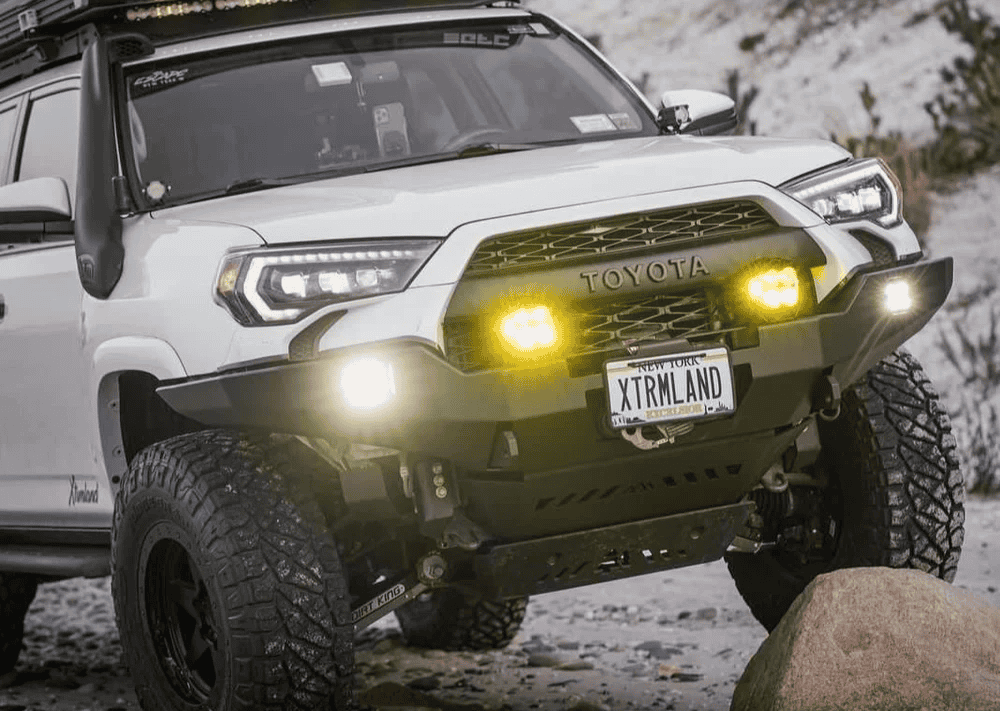Overland Vehicles

A Toyota Tundra overland setup succeeds when payload, balance, and reliability come first. Start with the truck’s actual payload rating on the door placard, then map every pound before you buy. Light wheels, sensible armor, and compact camp systems help you stay within limits while preserving handling and braking. Keep the center of gravity low by prioritizing bed mounted storage and a modest rack height. Add range planning early, since long gravel connectors can stretch fuel stops; a bed mounted can system or upgraded tank solves that.
Tire choice shapes the entire experience. All terrain tires in the 33 to 35 inch range offer a broad sweet spot for gravel, rock, and highway manners. Pair the size with proper gearing awareness and a professional alignment after suspension changes. Braking and steering feel should remain crisp even when loaded for a long route. Reliability is built through simple habits: fresh filters, quality fluids, and torque checks before every trip.
Choose a matched suspension system that accounts for added constant load from armor, tools, and camping gear. Aim for increased damping control rather than maximum lift. Too much height invites driveline and steering geometry issues, while a moderate lift with tuned spring rates keeps the truck composed. Set tire pressures with a load and inflation table and carry a compressor to air down on trail, then back up for highway legs.
Armor is insurance. Skid plates protect the oil pan, transmission, and transfer case from rock strikes. High clearance steps that function as rock sliders guard the cab and double as a safe jacking point. A quality front bumper can improve approach angle and provide rated recovery points; rear recovery points should be equally robust. Lighting should favor spread patterns for slow, technical driving, with a separate calm color temperature for night camp use.
Recovery gear is a system. Rated soft shackles, a kinetic rope, a shovel, traction boards, and a jack with a stable base cover most scenarios. Carry a full size spare matching tire and wheel, along with a plug kit and valve cores. Store tools low and forward to maintain balance, and secure everything so it stays quiet and safe on corrugations.
Do a walk around before obstacles and use a spotter on blind ledges. Practice safe rigging and avoid shock loads. If you add a winch, ensure the mount and electrical routes are clean, fused, and easy to service in the field.
Offline maps, satellite messaging, and GMRS radios keep the day smooth. Keep a printed route overview in the truck and mark bail out points for weather or timing changes. A simple comms plan for the group prevents confusion at intersections and river crossings.
Think of camp like a tiny house in motion. A dual battery setup with a DC to DC charger supports a 12 volt fridge, area lights, and device charging without draining the starter battery. Lithium batteries save weight and recharge quickly, while solar adds a steady top up when parked. Keep wiring tidy with labeled circuits and protected runs. For water, a compact 10 to 20 gallon solution with a food grade hose and quick disconnect makes daily use simple and clean.
Storage should be modular. A low bed rack with a rooftop tent can work, but a canopy with drawers keeps the center of gravity even lower and protects gear from weather. Use bins sized to your drawer system so kitchen, sleep kit, and tools each have a dedicated home. Shade is worth its weight on hot days; a simple awning with proper tie downs prevents surprises when the wind picks up. Cooking stays efficient with a dual burner stove, wind screens, and a prep surface at waist height to spare your back.
A Toyota Tundra overland setup shines when the truck drives as well loaded as it does empty. If your suspension tuning, tire pressure, and storage plan create a quiet, rattle free cabin, you will travel farther with less fatigue. Keep maintenance simple and scheduled, and the Tundra will return the favor on remote routes.
For owners who want expert guidance turning these principles into a coherent build, explore Overland rigs by OZK to see how a professional plan ties suspension, armor, and camp systems together. If you are ready for a tailored package, our Custom overland upfit process blends fabrication, electrical, and storage design so your Tundra feels dialed on day one. Curious about our approach and results. Visit Why choose OZK Customs for build philosophy and client outcomes.
Tell us how you travel, how much you carry, and the terrain you love. We will translate that into a quiet riding, thoughtfully organized Toyota Tundra that handles washboard, climbs confidently, and sets camp in minutes. Share a few details, and we will craft a clear plan with parts, timelines, and a handoff experience that gets you rolling fast.
Ready to dial in a Tundra that rides smooth on washboard and feels effortless at camp. Tell us how you travel, and OZK Customs will blueprint a purpose built overland upfit with the right suspension, armor, power, and storage for your routes. Submit the form to start your build plan.
ADDRESS:
6159 E Huntsville Rd, Fayetteville, AR 72701
PHONE:
(479) 326-9200
EMAIL:
info@ozkvans.com